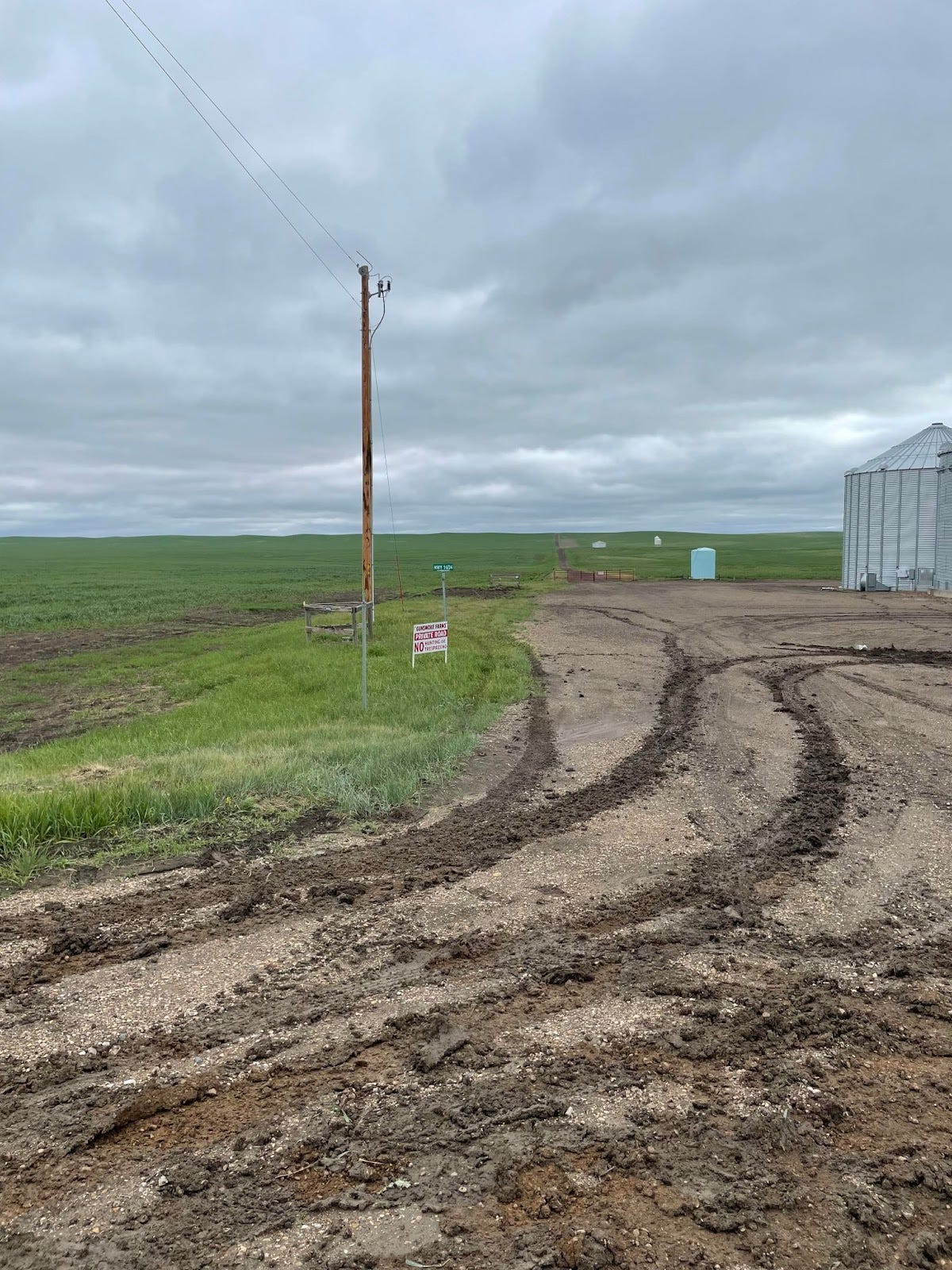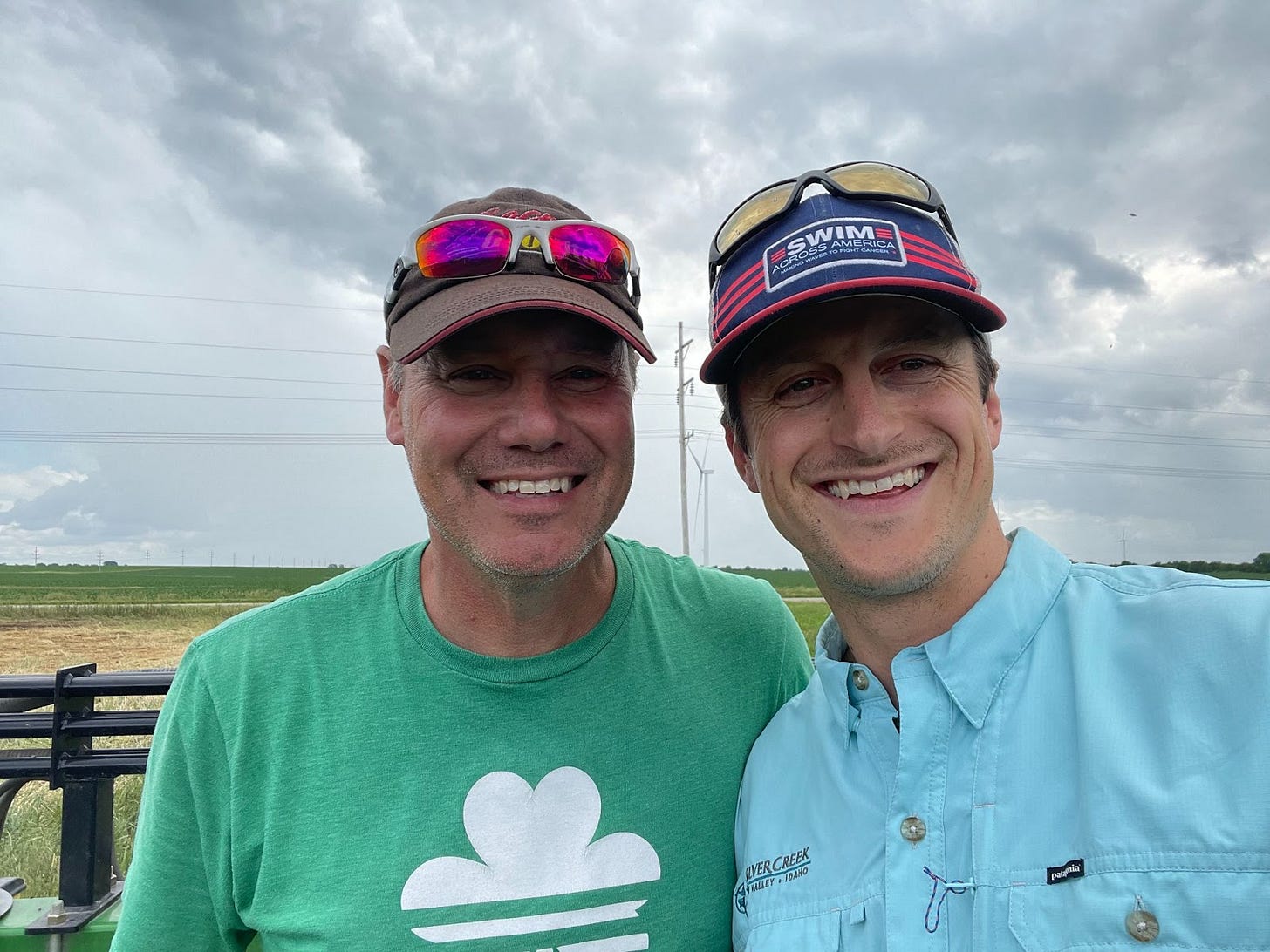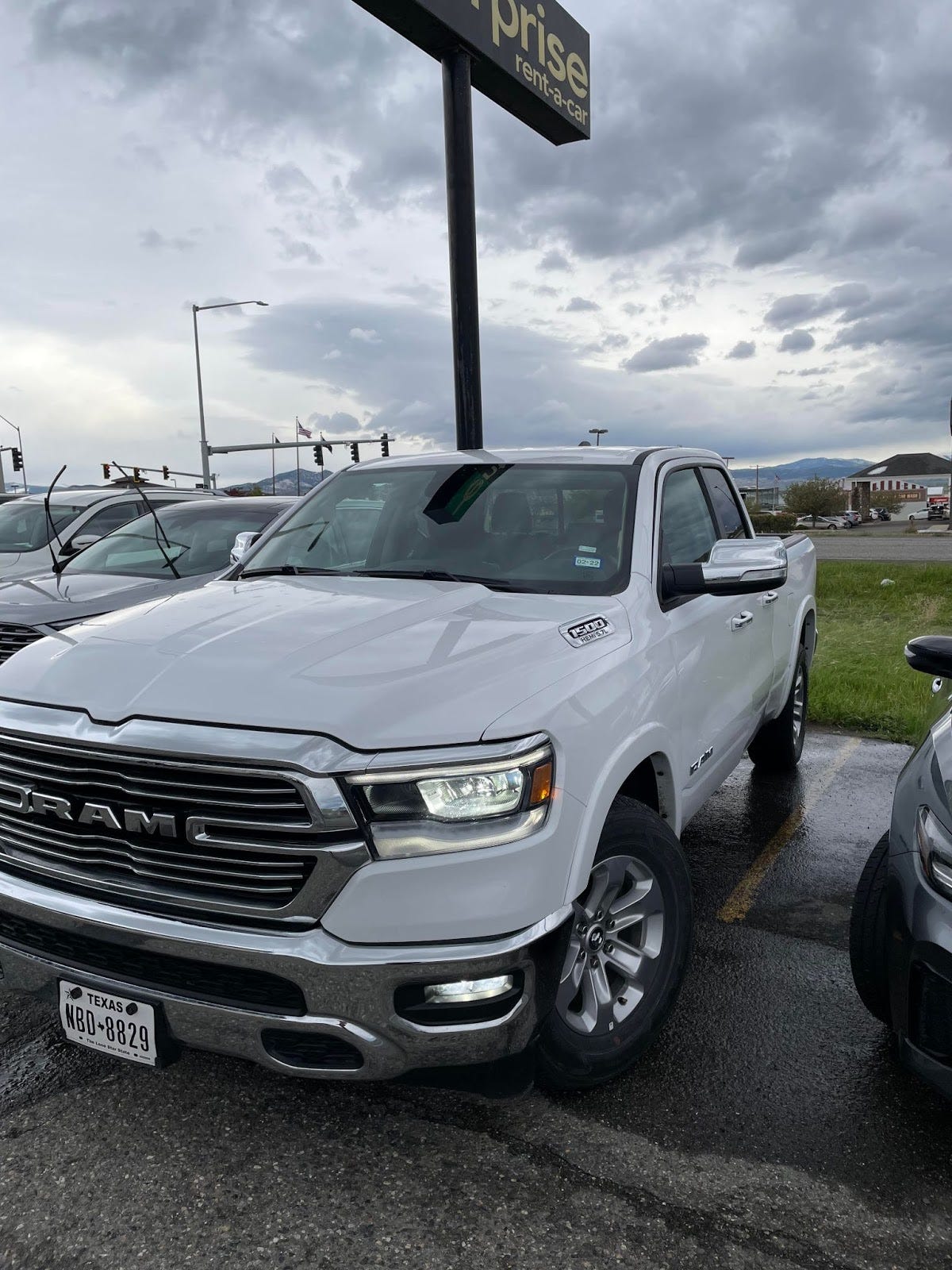My regenerative roadtrip through the American Heartland
The ups and downs and what I learned along the way
America is a big country. If you’ve never driven coast to coast I highly recommend it. You will find a land filled with welcoming people, stark contrasts and yes lots of cattle, corn and soybeans.
One month ago I flew to Helena, Montana and rented the manliest truck I could find. I was nervous about fitting in, given my coastal roots, and I had many a dirt road in my future.

As a venture capitalist turned entrepreneur, born in Connecticut and living in San Francisco, it’s fair to say that on the face of it, I was everyone’s worst nightmare of a coastal elite headed to farm country to break bread with the blue collar backbone of America’s food system.
I was often intimidated by the idea of my own trip. And there were a few moments when my trepidation was validated. It was 10:30pm on a rainy Wednesday May night when I arrived in Big Timber, MT (population 1,641). I was famished after 8 hours of driving and looking for a hot meal. I pulled into a parking lot behind a nondescript warehouse which my phone told me was the “Legion Bar”. Was I in the right place? Uncertain, I clumsily backed my truck into an open parking spot and got out, to find a man leaping out of his truck behind me shouting “oh is that how they drive in f*&king Texas!?”. Luckily I pushed my delusions of virile grandeur and rural justice aside and had the presence of mind to play the fool, “Oh I am so sorry! I’ll move out of your way”. I hopped back in my pickup, and pulled out so he could exit. I then reparked and as I got out of my truck for the second time the bartender, taking a cigarette break in the alley, said “it’s a good thing you did that, he was loaded and looking for a fight”.
That story was the outlier of the trip. I visited 23 farms on this trip and met countless folks who welcomed me into their homes with open arms, from Bob Quinn who cooked me homemade Kamut sourdough pancakes to Travis Brock who rolled out the red carpet for me in Kansas and Loran Steinlage who prepared a room for me at his home and brought me to his daughter’s rehearsal dinner and wedding in Iowa - I learned the true meaning of “Midwest Nice”.
Ok, enough of the personal stories - what about farming? What is the state of “regenerative agriculture” really like out there?
Dear god it is confusing! Almost everyone I met had a different definition of ‘regenerative agriculture’ and it made my head spin. True to their name the NoTill on the Plains community regard tillage of the soil as the #1 sin on earth and consider a judicious application of herbicide as a far preferable form of weed management than disturbing those root structures. And you know what - After my visit to Gunsmoke Farms I too have an allergic reaction to tillage now whenever I see it. However, I join the organic crew in fearing that any application of herbicides or other chemicals, no matter how small, can have a negative impact on soil biology that we must seek to avoid.
So what is my definition of “regenerative agriculture”?
I believe in “going full Rick Clark”. Rick Clark is a passionate grower in central Indiana who has become a mainstay on the regenerative agriculture speaking circuit - speaking with moving passion about his regenerative journey. Many in Rick’s family have beaten Cancer and he has had his own too-close-for-comfort scares with benign tumors - those experiences have moved him to take the plunge and embrace the most extreme tenets of regenerative agriculture: no till, no chemicals, no herbicides, no fertilizers, nada. When I visited with him on the open plains one humid afternoon after giving him my spiel about my trip and my desire to see more regenerative agriculture in the world he looked me dead in the eye and said “You have to decide for yourself, what is your definition of regenerative agriculture?”

So here is my definition of regenerative agriculture:
“regenerative agriculture is a set of holistic land management practices which seeks to mimic nature to build the maximum biodiversity possible both above the soil and below it, without the use of any off-farm inputs. In doing so it regenerates the soil to serve as a life source for generations without end and produces the healthiest and most nutrient dense food. There is no tillage of the soil, no use of synthetic fertilizers for nutrient management and no use of chemicals for pest or weed control. Nutrient and pest management are achieved using livestock, cover cropping, crop rotation and etymology to create equilibrium of insects, birds and animals both wild and domestic.”
So why isn’t everyone taking the leap to “full Rick Clark”?
Because it is incredibly risky, although your farm will almost inevitably be more profitable in the end, you very well might go broke before you are able to transition. Achieving the harmonious balance I described above can take decades of experimentation and learning and substantial capital which most farmers do not just have lying around. Below are the 4 biggest barriers to going full Rick Clark that I saw on my trip:
Access to capital: Several growers I met would love to add cattle to their farms however for one in particular he cannot do so until he spends $90,000 on exterior fencing to keep the cows from the road.
Access to midstream processing: For those looking to add livestock they need a local USDA approved meat processing plant (which typically does not exist either within a 5 hour drive or for smaller scale ranchers); for those looking to sell heritage grains they need access to local grain elevators and mills which will segregate their product from conventional, non-GMO grains - that infrastructure also does not exist.
Scale: Time and again producers expressed to me their frustration that the market was not rewarding them with a premium for the unique crops they were producing and the lower carbon footprint they were creating. Additionally, they found that the large brands who were interested in their grains were looking for far more volume than they could produce from their farm alone.
Uncertain carbon markets: All growers love the idea of being rewarded for their more regenerative practices which sequester carbon in the soil, but they are highly skeptical that they will get a fair deal. They fear that most of the money in the carbon markets will be made by Silicon Valley and Wall Street and many remember the debacle of the 2000s when this same promise was made and failed to materialize. Honest carbon markets are a key part to accelerating the transition to regenerative agriculture as they reward regenerative practices.
What am I planning to do about it?
I have found a way to address all of the above barriers at once and more rapidly transition millions of acres of farmland to the definition of regenerative agriculture that I espoused above. I’m currently reading a terrific book called Backable by Suneel Gupta. I’ll have to apologize for the cliff-hanger, but I’m going to take his advice and not reveal this business idea until it’s more fully baked. I’m heads down working through the details and am excited to share it with you when the time is right. Buckle up and prepare yourself - this will be no tiptoe into “trying to address climate change”; the sheer audacity and scale of what I plan to propose will move the needle on day 1.








Looks like a great trip! Can't wait for the next edition